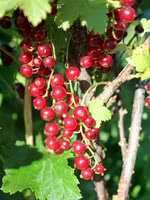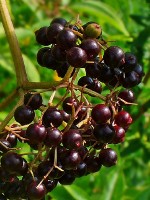Mon-Fri 9am - 5pm Mountain time
Red Currant vs Ranch Elderberry
Ribes rubrum
Sambucus canadensis Ranch
NOT AVAILABLE THIS SEASON - MIGHT RETURN
NOT AVAILABLE THIS SEASON - MIGHT RETURN
Red Currant is a deciduous shrub native to western Europe. It features five-lobed, maple-like leaves, and bright red berries that can be used in jams, sauces, and fresh eating.
Although this shrub is self-fertile, it will be more productive if another pollinator is present. For year over year high yields, ensure you fertilize (bone meal), prune, and mulch your Red Currant shrub.
Ranch Elderberry is a vigorous and high-yielding Black Elderberry cultivar. It ripens earlier than other varieties and is smaller and more compact making berry harvest easier. The berries are well-suited for baked goods, jams, jellies, and syrups. They are high in vitamin C and reported to be beneficial for the immune system.
Black Elderberries are considered to be partially self-pollinating. So while they will still produce some berries without cross-pollination, planting with another variety will increase yields. Consider planting with Black Elderberry or Bob Gordon Elderberry.
Warning: the seeds, stems, leaves, roots, and uncooked berries are toxic to humans when eaten in quantity. Berries should be cooked to make them safe for human consumption.
Red Currant Quick Facts
Ranch Elderberry Quick Facts
Toxicity: leaves, stems, and uncooked berries are poisonous to humans

